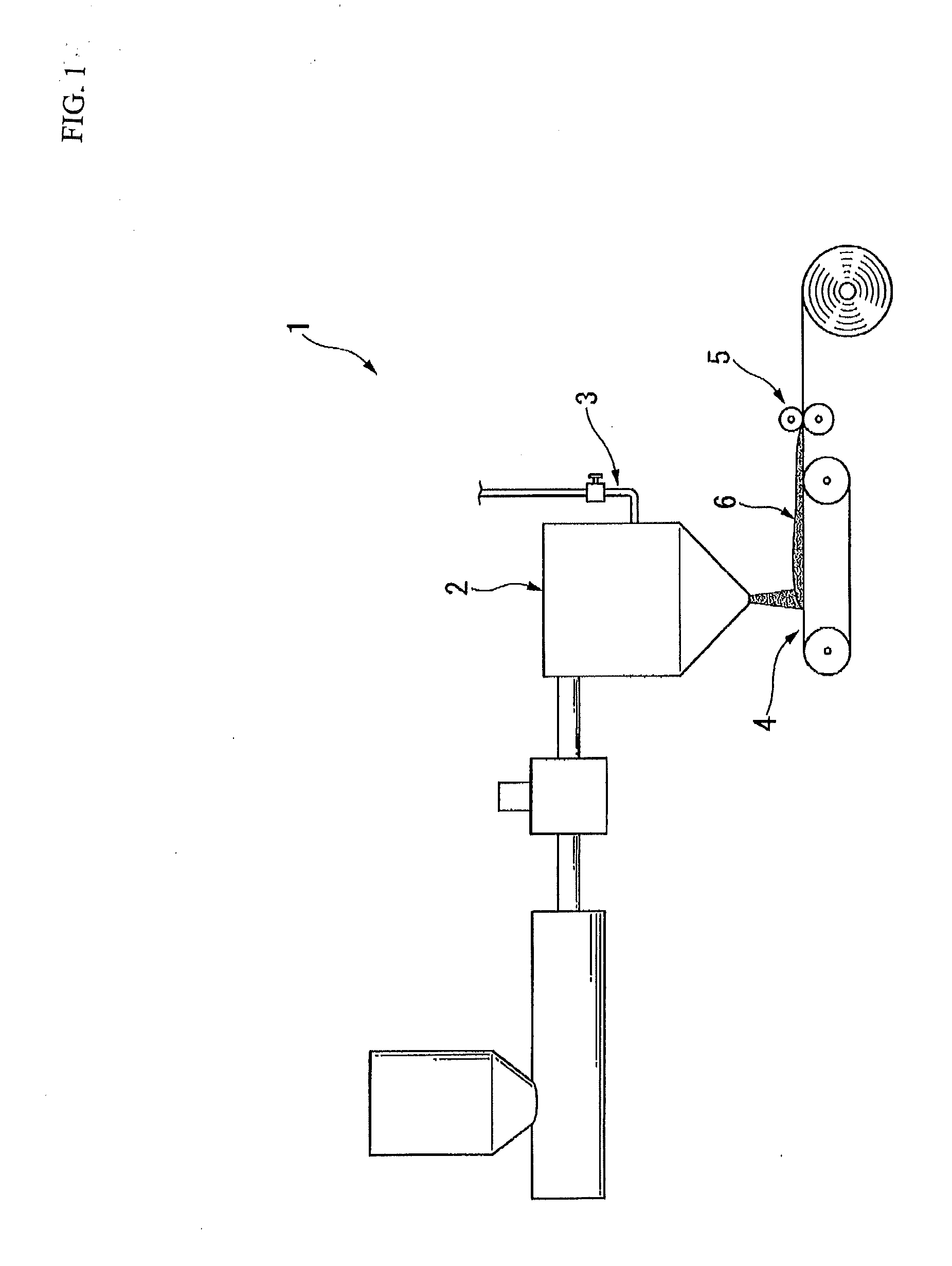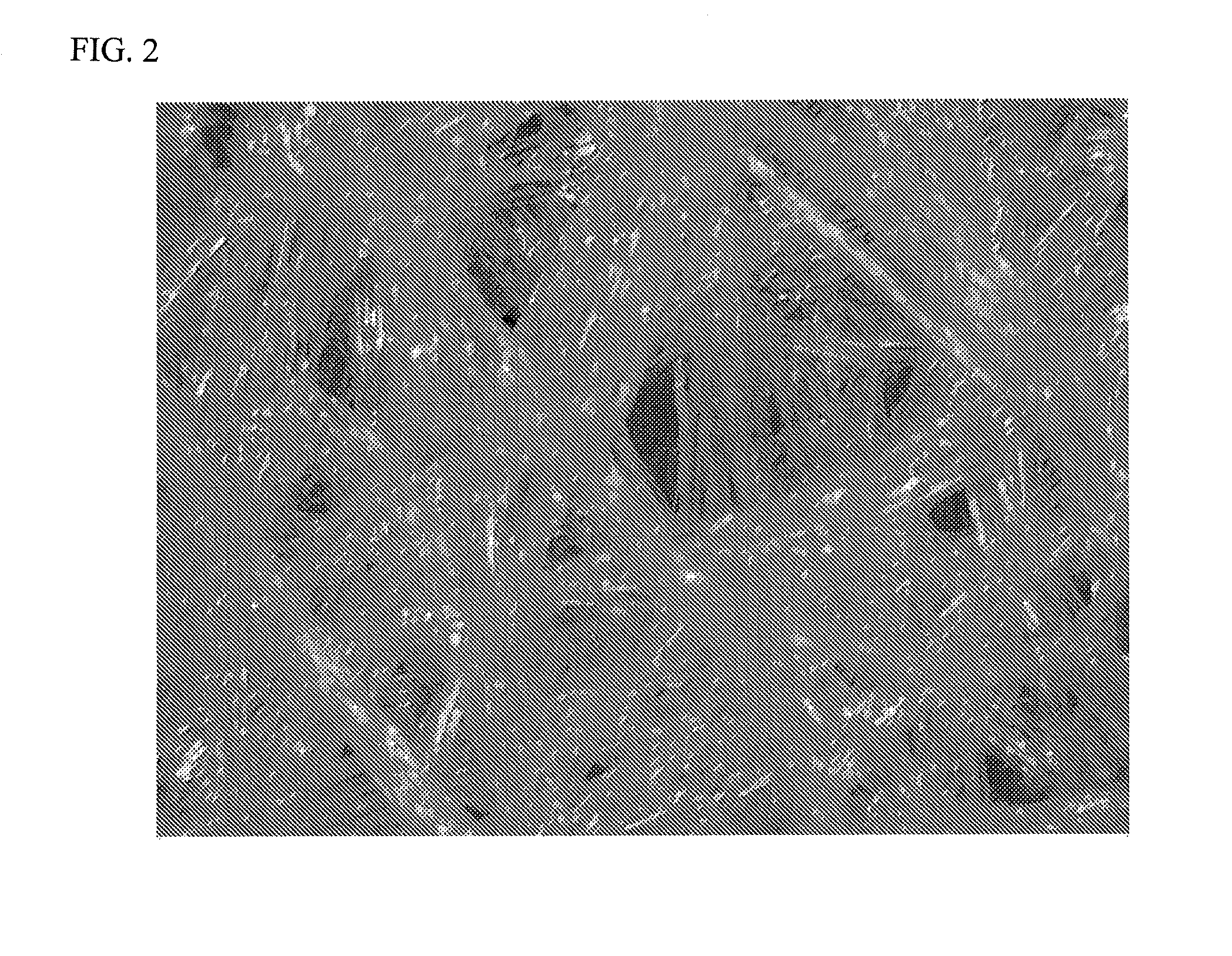Method for waterproofing substrate
a technology for waterproofing and substrates, applied in single-unit pavings, bridges, roads, etc., can solve problems such as deterioration and damage of concrete substrates, concrete destruction, and accelerated deterioration
- Summary
- Abstract
- Description
- Claims
- Application Information
AI Technical Summary
Benefits of technology
Problems solved by technology
Method used
Image
Examples
example 1
[0059]The surface of a foundation formed from a concrete slab for a pavement as defined in JIS A5304:94 was cleaned to remove dust, foreign matter and the like, and then an epoxy-based primer, “Primer PWF” (trade name, manufactured by Dyflex Corp.), was sprayed on the foundation in an application amount of 0.2 kg / m2.
[0060]Subsequently, a two-liquid type ultrafast hardenable polyurethane, “Plamax 500” (trade name, manufactured by Dyflex Corp.), was sprayed with a spray gun in an application amount of 1.2 kg / m2, and thus a polyurethane-based waterproof layer having a thickness of 1.2 mm was formed.
[0061]After this applied waterproof layer hardened, a two-liquid hardenable type urethane-based resin, “Resiprimer WG” (trade name, manufactured by Dyflex Corp.), was applied as the adhesive interlayer in an amount of 0.5 kg / m2.
[0062]Subsequently, before this urethane-based primer hardened, a non-woven fabric having a fiber density of 800 g / m2 was attached as the pavement adhesive layer, and...
example 2
[0066]A construction test specimen was obtained in the same manner as in Example 1, except that a non-woven fabric having a fiber density of 500 g / m2, which was formed by using a resin having a softening point of 45° C. and having a composition of 50% by mass of an ethylene-vinyl acetate copolymer resin, “Evaflex EV150” (trade name, manufactured by Du Pont-Mitsui Polychemicals Co., Ltd., melting point 61° C.), 45% by mass of an ethylene-vinyl acetate copolymer resin, “Evaflex EV40LX” (trade name, manufactured by Du Pont-Mitsui Polychemicals Co., Ltd., melting point 40° C.), and 5% by mass of an ethylene-vinyl alcohol copolymer resin, “Eval” (trade name, manufactured by Kuraray Co., Ltd., melting point 160° C.), was used and an HDI trimer, “Coronate HXR” (trade name, manufactured by Nippon Polyurethane Industry Co., Ltd.) was sprayed at a proportion of 5% relative to the weight of the non-woven fabric.
example 3
[0067]A construction test specimen was obtained in the same manner as in Example 1, except that a non-woven fabric having a fiber density of 1,000 g / m2, which was formed by using a resin having a softening point of 45° C. and having a composition of 60% by mass of an ethylene-vinyl acetate copolymer resin, “Evaflex EV150” (trade name, manufactured by Du Pont-Mitsui Polychemicals Co., Ltd., melting point 61° C.), 30% by mass of an ethylene-vinyl acetate copolymer resin, “Evaflex EV40LX” (trade name, manufactured by Du Pont-Mitsui Polychemicals Co., Ltd., melting point 40° C.), and 10% by mass of a thermoplastic polyurethane resin, “Miractran 22MR” (trade name, manufactured by Nippon Miractran Co., Ltd., melting point 110°), was used.
PUM
| Property | Measurement | Unit |
|---|---|---|
| Thickness | aaaaa | aaaaa |
| Thickness | aaaaa | aaaaa |
| Softening point | aaaaa | aaaaa |
Abstract
Description
Claims
Application Information
 Login to View More
Login to View More - R&D
- Intellectual Property
- Life Sciences
- Materials
- Tech Scout
- Unparalleled Data Quality
- Higher Quality Content
- 60% Fewer Hallucinations
Browse by: Latest US Patents, China's latest patents, Technical Efficacy Thesaurus, Application Domain, Technology Topic, Popular Technical Reports.
© 2025 PatSnap. All rights reserved.Legal|Privacy policy|Modern Slavery Act Transparency Statement|Sitemap|About US| Contact US: help@patsnap.com



